|
|
|
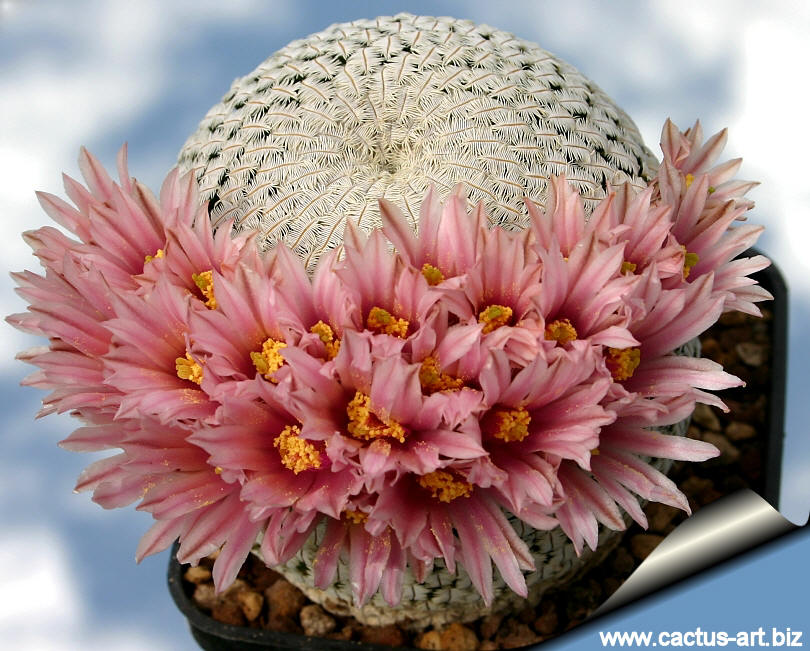
Mammillaria pectinifera |
|
Morphology (Identifying
Characteristics):
Description: This small
cactus appears above the ground as a squat, spherical stem,
centrally depressed, completely covered by flattened spines,
and usually
solitary. In cultivation the plant's stem may be
cylindrical, and it
will eventually produce clustering off-shoots
with age.
Stem:
3-5 cm in diameter. With
latex.
Spines:
20-40,
pectinate (comb-like),
flattened against the body, fine, numerous, white, 1.5 - 2 mm long.
Lacking
central spines.
Flower:
medium-sized in a ring around the sides of the globe, white to pink
with darker
mid-strip, 20-30 mm long and also in diameter.
Stigmas are green.
|
|
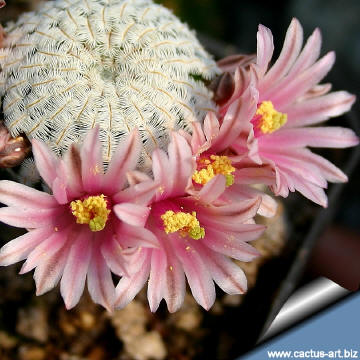
Pink flowering form |
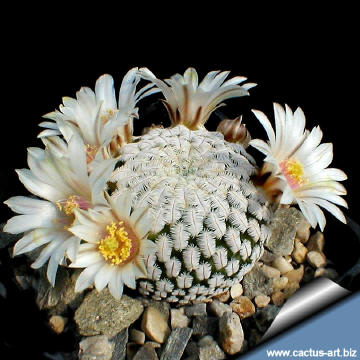
White flowering form |
|
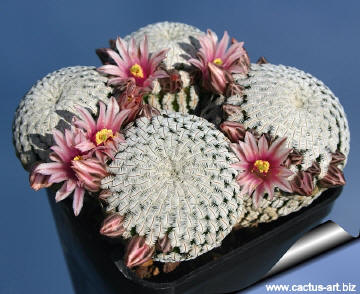
A nice clumped specimen. |
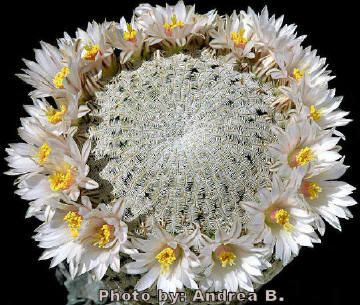
Photo
and © copyright by
Andrea
B. (Bologna, Italy) |
|
|
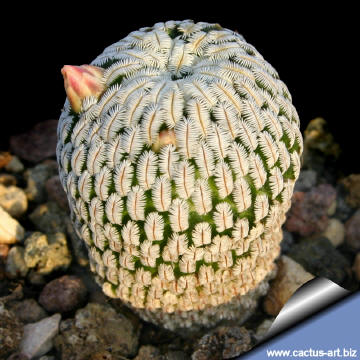 |
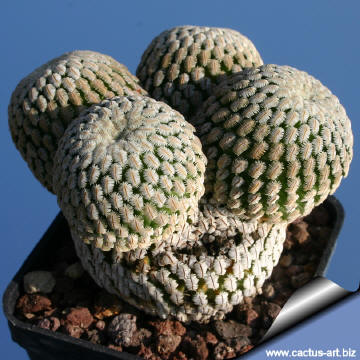
|
|
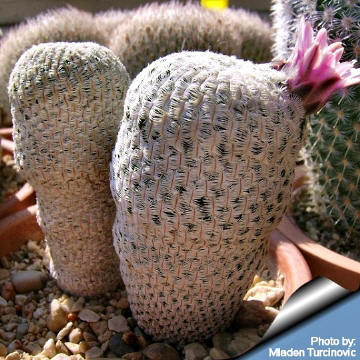
Photo and ©
copyright by
Mladen Turcinovic (Croatia) |
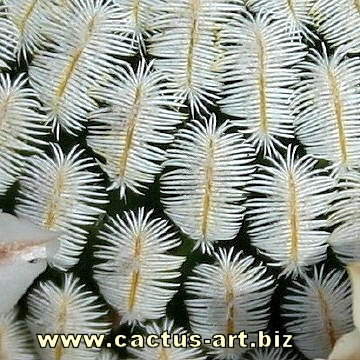
The characteristic
pectinate
and
innocuous spines. |
|


Advertising
|
|
|
|
|
Family:
Cactaceae
(Cactus Family)
Scientific Name:
Mammillaria pectinifera
F.A.C. Weber
898
in:
(Bois)
Dictionaire d'Horticulture 2: 804. 1898.
{Dict. Hort. }
Conservation status: Listed in
CITES appendix I
The species is classified as
endangered because of habitat
destruction, grazing of livestock, mining rock for construction, and
dumping of rubbish. Actually the illegal extraction and trade of the plant doesn't seem
to be a real threat, because artificial propagation is
not a problem today, and many nurseries produce the species. Subgenus: Mammillaria
Section: Hydrochylus
Series: Pectiniferae
Group: Pectinifera
Synonyms:
- Pelecyphora pectinata,
B.A.Stein 1885
- Solisia pectinata (Stein)
Britton & Rose 1923
- Pelecyphora aselliformis pectinifera
Rumpler 1885
- Pelecyphora aselliformis pectinata
Nicholson 1888
- Pelecyphora aselliformis cristata
Watson 1899
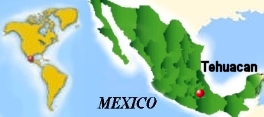 Distribution:
Endemic to a few low density localities of the biosphere reserve in the Tehuacán valley, north-western Oaxaca, in southern
tropical
Mexico, This is an ecological island of extraordinary
diversity, rich in
xerophytic species of plants restricted to just this valley, of which 30
percent are endemic. (among cactus: Ferocactus ingens, Ferocactus
recurvus, F. robustus, Coryphantha pallida ,M. pectinifera and M. napina
etc. ) Distribution:
Endemic to a few low density localities of the biosphere reserve in the Tehuacán valley, north-western Oaxaca, in southern
tropical
Mexico, This is an ecological island of extraordinary
diversity, rich in
xerophytic species of plants restricted to just this valley, of which 30
percent are endemic. (among cactus: Ferocactus ingens, Ferocactus
recurvus, F. robustus, Coryphantha pallida ,M. pectinifera and M. napina
etc. )
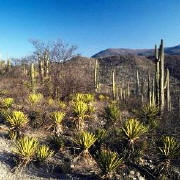 Habitat: Grows in the Tehuacán Valley
Matorral, a
desert/xeric tropical shrub
basin, under bushes and other vegetation, on deep
alkaline soils with
relatively high surface stoniness and high
water retention capacity. Habitat: Grows in the Tehuacán Valley
Matorral, a
desert/xeric tropical shrub
basin, under bushes and other vegetation, on deep
alkaline soils with
relatively high surface stoniness and high
water retention capacity.
The
climate is semi-dry, hot, with summer rains and slight
temperature oscillations.
|
|
|
|
|
|
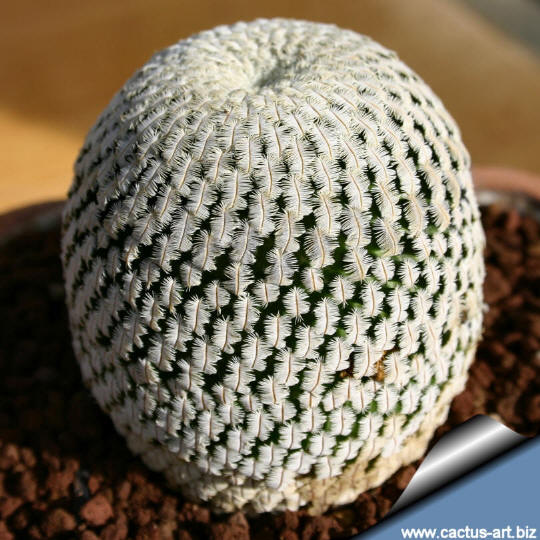
Mammillaria pectinifera SB530 nw Tehuacan, Pue.
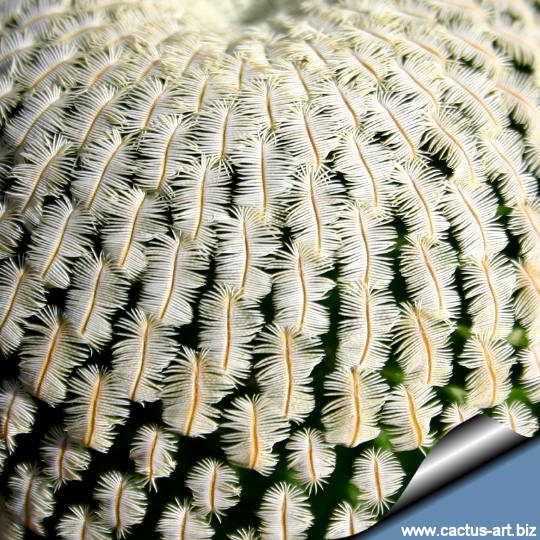
Cultivation: Cultivation: Slow growing, this plant is
very rot prone and temperamental when cultivated on its own roots,
but it is easy to grow if grafted. Mammillaria pectinifera
has a fairly large tap root, and should be kept in a deep pot with a
very draining mineral substrate. Watering during the active growing
season (spring and summer), this will encourage steady growth.
But be careful with watering, which all thick rooted species require
(rot sensitive). Keep dry during the winter rest.
Fertilize every 2 weeks with diluted high potassium fertilizer when
the plant is in bud. Light shade or full sun exposures.
Propagation: Direct sow after last frost.
(seldom produces offsets)
Photo of conspecific taxa, varieties, forms and
cultivars of
Mammillaria pectinifera:
|
|